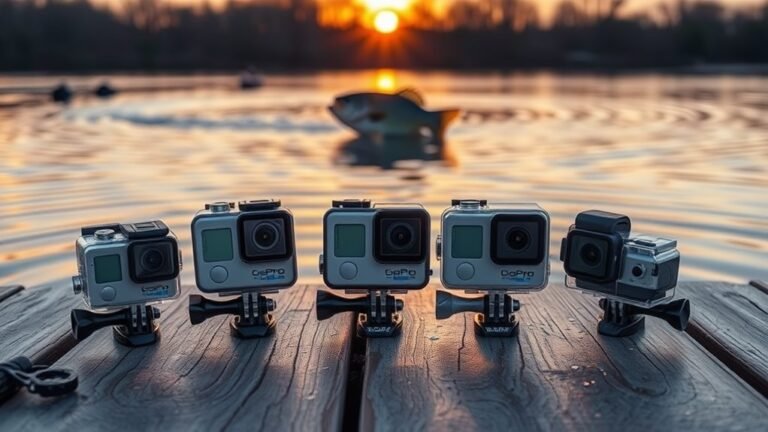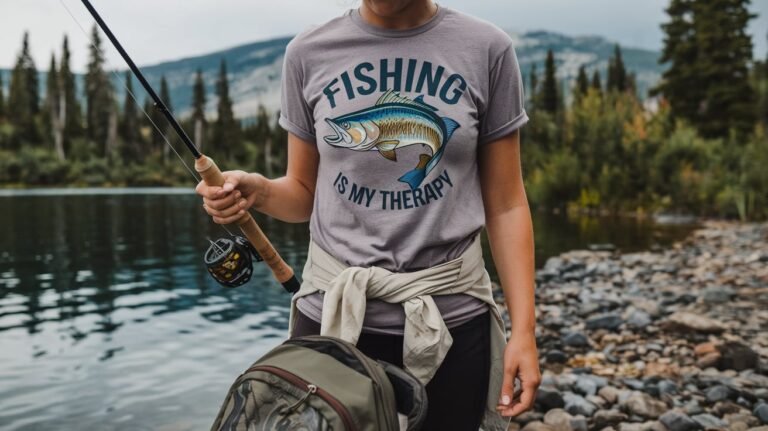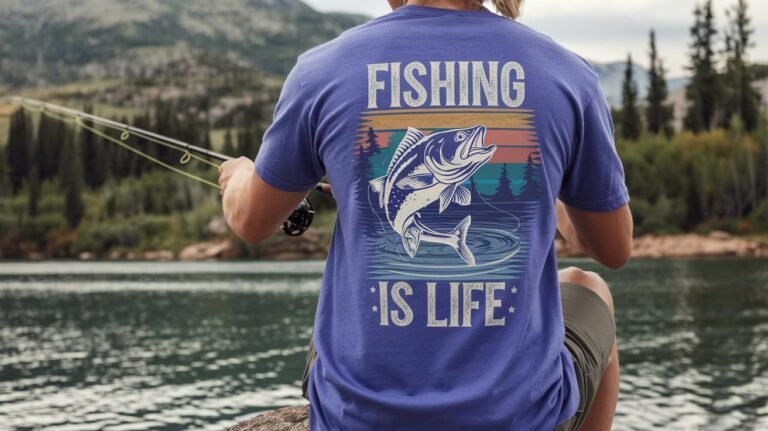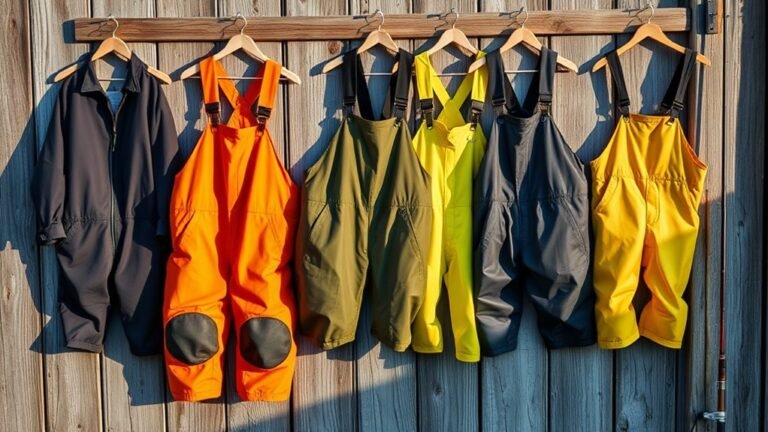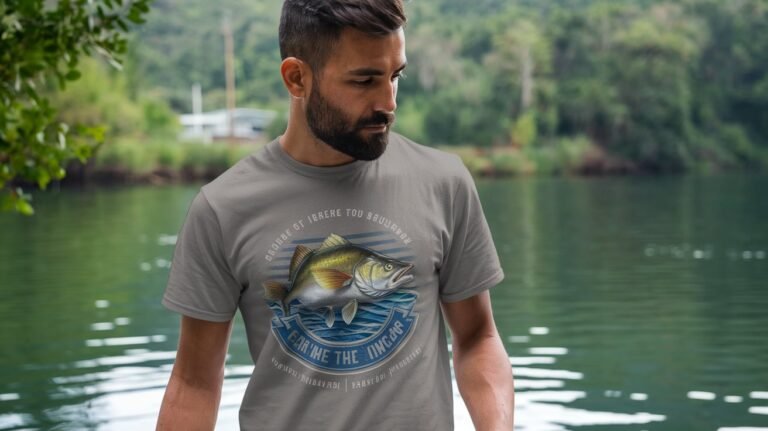5 Best Fish Finders for Kayak Fishing
Imagine drifting quietly on your kayak, watching fish scatter beneath you without catching any. Modern fish finders can turn your fishing experience from guesswork into a data-driven adventure.
Whether you're a weekend angler or a serious fisherman, choosing the right fish finder for your kayak is crucial for effectively spotting and catching your target species.
Let's explore the top five options to enhance your time on the water.
Key Takeaways
- Garmin Striker 4 GPS Fishfinder leads kayak choices with its compact design, Clear Vu sonar, and reliable GPS at an affordable price point.
- Lowrance HOOK2 offers superior fish-finding efficiency with its wide-angle sonar and user-friendly interface, ideal for kayak mounting.
- Reelsonar iBobber provides ultimate portability and convenience through wireless Bluetooth connectivity and smartphone integration for kayak anglers.
- Garmin Striker Vivid 4cv combines CHIRP sonar technology with custom mapping capabilities, perfect for serious kayak fishing expeditions.
- Humminbird PIRANHAMAX 4 DI delivers excellent down imaging and dual-beam sonar in a lightweight package suitable for kayak installations.
Garmin Striker 4 GPS Fishfinder with Transducer
Prices pulled from the Amazon Product Advertising API on:
Product prices and availability are accurate as of the date/time indicated and are subject to change. Any price and availability information displayed on [relevant Amazon Site(s), as applicable] at the time of purchase will apply to the purchase of this product.
For beginner to intermediate kayak anglers, the Garmin Striker 4 GPS Fishfinder offers a compact 3.5-inch display and lightweight 8-ounce design. It features Clear Vu scanning sonar for near-photographic images of fish and structures, and Chirp sonar for crisp fish arches. The built-in GPS lets you mark fishing spots and navigate with ease, showing speed and water temperature.
It explores depths up to 1,600 feet in freshwater and 750 feet in saltwater. Dedicated buttons ensure easy operation, even in wet conditions, and the IPX7 rating provides splash protection. The built-in flasher function is ideal for ice fishing or vertical jigging.
Best For: Entry-level to intermediate kayak anglers seeking a compact, user-friendly fishfinder with basic GPS and reliable sonar at an affordable price.
Pros:
- Great value with combined GPS and CHIRP sonar in a compact, lightweight unit
- Clear Vu scanning offers detailed underwater imaging and strong target separation
- Versatile for various fishing styles, including ice fishing, with a built-in flasher
Cons:
- Small 3.5-inch display may be hard to read in bright sunlight or for those preferring larger screens
- Lacks advanced features found in higher-end fish finders
- Battery draw of 0.23 Ampere may require frequent charging during extended use
Garmin Striker Vivid 4cv Fishfinder (010-02550-00)
Prices pulled from the Amazon Product Advertising API on:
Product prices and availability are accurate as of the date/time indicated and are subject to change. Any price and availability information displayed on [relevant Amazon Site(s), as applicable] at the time of purchase will apply to the purchase of this product.
Kayak anglers will find the Garmin Striker Vivid 4cv an ideal compact fish finder with powerful features. It boasts a 4-inch color display that ensures clear visibility of fish locations, bottom structures, and depth, even in foggy conditions. Equipped with traditional CHIRP sonar and CHIRP ClearVü scanning via the GT20 transducer, it offers excellent performance.
The high-sensitivity GPS lets you mark waypoints, create routes, and track your boat's speed. Quickdraw Contours mapping enables custom fishing maps, and mounting the transducer outside the kayak ensures accurate tracking of water temperature, fish sizes, and bottom composition. Simple setup and a user-friendly interface make it suitable for novice and experienced anglers.
Best For: Kayak and small boat owners wanting a compact, feature-rich fish finder with reliable GPS and clear sonar imaging at a mid-range price.
Pros:
- 4-inch vivid color display with excellent visibility
- Features CHIRP sonar, ClearVü scanning, and GPS waypoint marking
- Simple setup and custom mapping capabilities
Cons:
- 4-inch screen may be too small for some
- Requires careful transducer mounting for best performance
- Limited mapping compared to higher-end models
Reelsonar iBobber Wireless Bluetooth Fish Finder
Prices pulled from the Amazon Product Advertising API on:
Product prices and availability are accurate as of the date/time indicated and are subject to change. Any price and availability information displayed on [relevant Amazon Site(s), as applicable] at the time of purchase will apply to the purchase of this product.
The Reelsonar iBobber is a lightweight, portable fish finder with wireless Bluetooth that connects to iOS and Android devices. It provides real-time fish location and water depth information up to 135 feet, using color-coded icons for fish size. Suitable for freshwater, saltwater, and ice fishing, it features a fish alarm and strike alert for potential bites.
Compact in design, the iBobber easily mounts on kayaks or boats, and users can adjust sensitivity for different water conditions. The battery lasts around 9 hours, but some users experience connectivity issues and faster battery drain. Ideal for casual anglers using kayaks, small boats, or shorelines, it offers affordable, smartphone-compatible functionality.
Pros:
- Lightweight and highly portable with easy smartphone integration
- Versatile for freshwater, saltwater, and ice fishing
- User-friendly with fish alarms and color-coded size indicators
Cons:
- Inconsistent battery life with potential for faster drain
- Occasional Bluetooth connectivity issues
- Limited depth range compared to professional-grade finders
Lowrance HOOK2 Fish Finder
Prices pulled from the Amazon Product Advertising API on:
Product prices and availability are accurate as of the date/time indicated and are subject to change. Any price and availability information displayed on [relevant Amazon Site(s), as applicable] at the time of purchase will apply to the purchase of this product.
The Lowrance HOOK2 4x Fish Finder is perfect for kayak anglers who want simplicity and functionality. Its user-friendly interface features phone-like menus and auto-tuning sonar, making it easy for beginners. The wide-angle sonar cone offers twice the coverage of traditional fish finders, improving fish location efficiency.
The 4.3-inch display ensures clear visibility of underwater structures and fish, while the Bullet Skimmer transducer provides reliable 2-D sonar views. Installation is simple, with various mounting options, and its compact size (10.5 x 4.25 x 8.5 inches) fits well in kayaks. Despite some power-up issues, a 4.2-star rating from over 3,000 customers indicates reliable performance for most users.
Best For: Entry-level and recreational kayak anglers looking for an affordable, easy-to-use fish finder with basic features.
Pros:
- Easy-to-use interface with auto-tuning sonar and intuitive menus
- Wide-angle sonar cone doubles coverage of traditional fish finders
- Simple installation with versatile mounting options
Cons:
- Reports of power-up and system stability issues
- 4.3-inch screen may be too small for some
- Inconsistent customer service and warranty experiences
Humminbird 410160-1 PIRANHAMAX 4 DI (Down Imaging) Fish Finder, Black
Prices pulled from the Amazon Product Advertising API on:
Product prices and availability are accurate as of the date/time indicated and are subject to change. Any price and availability information displayed on [relevant Amazon Site(s), as applicable] at the time of purchase will apply to the purchase of this product.
Kayak anglers will value the Humminbird PIRANHAMAX 4 DI for its advanced down imaging and vibrant 4.3-inch color display. The dual-beam sonar system offers narrow and wide beam options for clear fish and structure identification. Its user-friendly interface includes Fish ID+, fish alarms, and depth alarms.
Weighing just 2 pounds, the compact unit features a versatile tilt and swivel mount, ideal for kayak use. The XNT 9 DI T transom-mount transducer provides detailed imaging of underwater features like timber and rocks. The easy setup ensures a quick start on the water.
Best For: Kayak anglers and small boat owners needing a compact, entry-level fish finder with down imaging.
Pros:
- Clear down imaging on a 4.3-inch color display
- Lightweight design with a versatile mount for kayaks
- Essential features like Fish ID+ and alarms
Cons:
- Settings may require resetting after power-up
- Fewer advanced features compared to premium models
- Some users encounter setup challenges
Factors to Consider When Choosing Fish Finders for Kayak Fishing
When you're selecting a fish finder for your kayak, you'll need to evaluate several critical features that affect both performance and usability. The display size and visibility should match your viewing needs while on the water, and you'll want to guarantee your chosen power source can sustain the unit throughout your fishing trip. Your decision should also factor in practical considerations like mounting options, water resistance ratings, and the type of transducer that's compatible with your kayak's hull design.
Display Size and Visibility
Choosing the right display size and quality is crucial for kayak fishing. Fish finder displays typically range from 3.5 to 7 inches. Larger screens offer better visibility, but you must balance this with your kayak's space limitations.
Focus on resolution quality; higher resolutions like 480 x 320 provide clearer images of fish and underwater structures. Color displays help differentiate depths and bottom compositions, aiding in identifying promising fishing spots.
Select a fish finder with sufficient brightness and contrast for visibility in bright sunlight. Ensure you can read the screen clearly in all lighting conditions without straining your eyes. While larger displays may be tempting, consider the unit's weight and size to keep your kayak equipment compact and lightweight for better maneuverability.
Power Source Requirements
Selecting the right power source for your kayak fish finder is crucial for reliable performance. Most fish finders use 12 Volt DC power or lithium batteries. Choose a model with at least 10 hours of battery life to avoid running out of power during a full day of fishing.
Pay attention to the unit's current draw, as lower amperage extends battery life. Opt for models that are compatible with common battery types like lithium metal, which balance weight and reliability. Consider the ease of battery replacement and charging options to prevent power interruptions during your fishing trips.
Mounting Options
Mounting options for kayak fish finders are crucial for performance and convenience. Consider how the unit attaches to your kayak and if the system meets your needs. Many fish finders offer transom or portable mounts for flexible positioning and easy removal after fishing.
Opt for compact, lightweight designs to minimize impact on your kayak's handling. Some models provide suction cup mounts or clamp-on options, offering stable attachment without permanent modifications. These are ideal if you rent kayaks or frequently change watercraft.
The transducer's mounting location is essential for optimal performance. Ensure it's properly secured and positioned for clear sonar readings. Evaluate how well mounting options protect your equipment and maintain stability in various water conditions.
Water Resistance Rating
For kayak fishing, a robust water resistance rating is crucial for your fish finder. Look for devices with at least an IPX7 rating, ensuring protection against water immersion up to 1 meter for 30 minutes. This offers peace of mind during your fishing trips.
On the water, various conditions can threaten your equipment's functionality. A water-resistant fish finder can handle not just splashes but also heavy rain and rough waters. The best models feature reinforced casings and reliable seals to protect sensitive components.
Pay close attention to water resistance specifications when comparing models. These features, while possibly increasing initial costs, are essential for protecting your investment and ensuring consistent performance. A water-resistant fish finder ensures accurate readings and reliable operation, regardless of weather conditions.
Transducer Type Selection
Choosing the right transducer is crucial for a successful kayak fishing experience. Consider sonar technology options like traditional 2D sonar and Down Imaging, which affect your ability to visualize underwater structures and fish. Opt for a transducer with both narrow and wide beam capabilities for detailed area views and broader water scans.
Match the transducer's depth range to your fishing environment; quality units typically detect fish up to 1,600 feet in freshwater. Proper installation is key, so check mounting options, as many transducers come with kayak-specific brackets. Prioritize durability and portability, ensuring the transducer can handle rough conditions and is easy to transport and set up.
Frequently Asked Questions
How Long Does a Fish Finder's Battery Typically Last on a Full Charge?
You can typically expect a fish finder's battery to last between 6-12 hours on a full charge, depending on your specific model and usage patterns. Your screen's brightness settings, sonar frequency, and GPS usage will impact battery life. If you're using a 12V lead-acid battery, you'll get longer runtime than with smaller lithium-ion batteries. It's smart to carry a backup battery for extended trips on the water.
Can Fish Finders Work Effectively in Very Shallow Water Under 3 Feet?
While you might think fish finders won't work well in shallow water, they can actually be effective in depths under 3 feet if you choose the right settings and equipment. You'll need to adjust your sensitivity and use higher frequencies (like 200kHz) for better shallow water performance. Some units also offer specific shallow water modes. For best results, you'll want to position your transducer to minimize interference from the bottom and reduce your ping speed.
Do Fish Finders Work at Night or in Murky Water Conditions?
Yes, fish finders work effectively at night and in murky water conditions since they use sonar technology, not light or visibility, to detect fish. You'll get the same performance regardless of lighting conditions or water clarity. The device sends sound waves that bounce off objects underwater and return signals to create images of fish, structures, and bottom contours. Some advanced units even offer enhanced sensitivity settings for challenging water conditions.
What's the Average Lifespan of a Kayak Fish Finder Before Replacement?
You can expect your fish finder to last between 5 to 7 years with proper maintenance, though some high-end models might last up to 10 years. Your unit's lifespan largely depends on how well you care for it, usage frequency, and environmental exposure. To maximize longevity, you'll need to protect it from extreme temperatures, keep it clean, and guarantee proper storage. Regular software updates and careful handling of cables will also extend its useful life.
Can Multiple Fish Finders Interfere With Each Other on Nearby Kayaks?
Multiple fish finders can potentially interfere with each other when operating in close proximity, especially if they're using the same frequency. You'll notice this interference as noise or false readings on your display. To minimize this issue, you can switch to different frequencies if your unit allows it, maintain reasonable distance between kayaks, or use split-screen mode with different frequencies. Modern fish finders often include built-in interference rejection settings to help manage this problem.
Conclusion
Modern fish finders have revolutionized kayak fishing, with 73% of anglers noting better catch rates with this technology. Whether opting for the GPS-enabled Garmin Striker 4 or the wireless iBobber, these devices cater to various needs. Consider budget, kayak size, and fishing style when selecting a top performer to improve your water experience.


